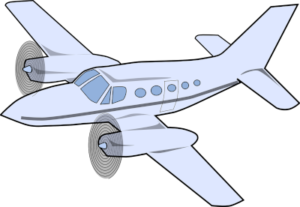 The Piper Seneca (PA-34) was a great plain, and I spent many flight hours in the plane. As I mentioned before, a twin is faster and more reliable than the single engine I started with. At least, that was my way of thinking and justifying the purchase.
The Piper Seneca (PA-34) was a great plain, and I spent many flight hours in the plane. As I mentioned before, a twin is faster and more reliable than the single engine I started with. At least, that was my way of thinking and justifying the purchase.
The challenge in a twin, though (or any high performance plane), was to learn to stay ahead of the plane. You had to think ahead. Before a landing you had to plan so you would know without hesitation what to do next. I mean, you're traveling at over 100 mile per hours so things can get out-of-hand quickly if you are not prepared.
That's the reason for proficiency training. It's not a requirement for private pilots. The minimum requirement is to take a biannual flight review. That's it! Well, if you've flown any at all during that two-year period, a biannual review is a breeze.
Now, I had been in several situations......especially in instrument conditions........that were not fun and required me to pay close attention to everything that was going on. A biannual review was not enough. I felt that I needed someone more experienced that could me put me through the paces. What if I had a real emergency? I knew would not be the time to figure out what to do next. I needed to know! And the only way to do that was to hire someone to “drill” me.
I don't remember how I came across this fellow, but, I found someone based in Chicago that had the training I was looking for. Better still, I could have him come and train one-on-one.
This worked well as it built my knowledge of the plane and confidence in my abilities to fly. The guy was good. He made me sweat and earn the training.
Little did I know, though, just how important that training would be.
One Saturday evening, my mother, brother, dad and I (I wasn't married) took a short flight to a neighboring city and eat at the airport restaurant. There was nothing special about the restaurant. Their menu was simple......hamburger, fries, and maybe a few other sandwiches. It's just getting to fly somewhere and eat out. How cool is that!
When we finished, it was getting dark, but that didn't really matter as I had flown at night many times and was well familiar with the plane. As I remember, it was nice weather out and not a cloud in the sky. This should make a great trip home. There are no weather currents to make the trip less than perfect.
We all boarded the plane, taxied to the end of the runway and took off. Everything seemed normal. We got to about 300 ft and had total electrical failure. This was not good! I checked all the breakers and everything was in order but we had no electricity. Now, for those of you familiar with planes, you know the engines run on magnetos. So, once the engines are started, electricity is not needed ........... and that's good as I had none.
Dad was sitting with me up front and we were discussing what to do next. Should we chance it and fly back home or stay and try to land?
Here was the dilemma. If you remember, during the 80s there was an energy crisis going on. Therefore the runway lights at this airport we automatically turned off after a short . Now, I could turn the lights on.........if I had a radio. But ALL of my electrical stuff is out. I could use my compass and the vacuum instruments. But that's it. I didn't have a hand held radio or anything to turn the runway lights on.
There was also the thought of flying back home. After all it wasn't far and would probably have taken less than 30 minutes to make the trip. The problem that kept coming to mind was “What if we got lost?” The trip is not far and I've travel that route many times, but, this was at night and there was no moon. Absolutely nothing I could be sure I could follow. Getting lost in the air at night is not a good thought at all especially without instruments.
So, I decided my best chance for surviving this trip was to land where I had just taken off. I had the airport in site at all times and could find the end of the runway by lining up with the VASI (visual slope indicator) lights. This would get me started in the right direction. However, I still was not sure what we would do once we got close to the ground. Maybe we could see at least a shadow of the ground.......I hope.
Here's where my training a few months earlier kicked in. I knew exactly what to set my controls on to get the correct rate of decent. There was no guess work there. Once everything was set, I could concentrate on finding the ground.
I remember getting close to the ground but still could see nothing. The tail buffeted (or stall) and I knew we were close just not how close. Then I felt us hit. It was like riding a rough road. When we came to a stop, my first thought was to get everyone out and get away from the plane in case of a fire. I had plenty of fuel and did not want to take a chance on being burned.
Getting my brother out was the only real challenge. The way we landed we could open the doors and get out ourselves but my brother was an invalid. He was born with no arms or legs, so, someone had to pick him up, put him in his wheel chair and get him away from the plane as quickly as possible which we did.
Finally everyone was safe on the ground and out of harms way. What a trip!!
And, to add insult to injury.......so to speak, a local commuter plane landed within minutes of our landing. The runway lights lit the night sky as we were walking toward the terminal.
I'm sure you can just imagine what was going through my head, now. “If I had just waited a few minutes longer..........”
As it all turned out, the plane was a total lose, but we survived unharmed. No one go so much as a scratch.
